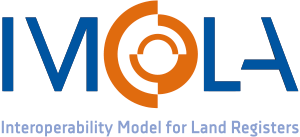September 22, 2014 / ELRA Secretariat

Background
There is a need for a standard means of accessing basic land registry information within the EU. Yet, the cross-border exchange of information between European land registries is complicated. Differences in national legislation and divergences inherent to the practice of land registration are the main causes of this complexity. Therefore, a need for a standard means of accessing basic land registry information within the EU, paired with the availability of explanatory material and the training of practitioners to improve the understanding of foreign legal systems, is evident.
Common points do exist and offer the possibility of defining a structure of key information shared by the majority of land registry systems. IMOLA project, subsidized by the EC Civil Justice Programme, will perform in-depth research on these common key points, develop interoperability solutions that will make the differences understandable to the professionals participating in real estate transactions, and facilitate cooperation with other networks in order to contribute to the development of a European real estate and mortgage market.
Aims and Objectives
The project aims to produce a model for standardised land registry output, connected to explanatory material in different languages, and to provide training to improve understanding of the different legal systems involved. The European Land Registry Association (ELRA) will work closely with other associations and networks working in this area. It will use the resources of ELRA’s European Land Registry Network (ELRN) and build on the experience gained from EULIS’s Project LINE (a project which aims to facilitate compliance with the requirements of the e-Justice programme in the area of land registration).
The objective is to increase the accessibility and transparency of land registry information and to facilitate the registration of cross-border documents. Varied legislation and practices of Land Registries hamper the exchange of information between them and the registration of cross border documents. Any standard model has to take into account fundamental differences in national organisation. However, common points offer the possibility of defining a structure of key information shared by the majority of Land Registry systems.
Activities
As an initial stage, different types of property rights and registration methods will be compared. Based on this comparative research, an analysis will take place and EU placeholder descriptions will be developed that could help to connect equivalent rights. The research will also include the conditions of access to the information of each country, particularly data protection policy, and the use of electronic communication. The outcome should be a draft of an interoperability framework, which will be discussed in three conferences. Part of this framework is describing an XML language for Land Registers and development of a template for a E(uropean) L(and) R(egistry) D(ocument) to which the entering of XML-data could be computerized. The draft will be presented to registrars, legal scientists and other key players. Based on the comments received, the model will be updated.
Expected results of the project
1. Guide lines for the establishment of standardised access to land registry information; guide lines for the creation of a European single identification number of land registry property.
2. Define a broker to unify the many national defined dictionaries, information models, protocols and output formats.
3. Define an information model. This information model links directly to the semantic domain. It models both the foundation of each right, as well as the load of each request. The model should be compatible with e-CODEX.
4. Define a model for a European Land Registry document (ELRD).
5. The assistance tools complementing the single point of access within the e-Justice portal will enable an effective use of this information. Three levels of assistance are envisage, (1) basic information through a glossary, (2) a deeper knowledge through fact sheets explaining the main topics, and (3) a third level of personal assistance for EU authorities and legal practitioners through ELRN.
6. Implement a publication engine that takes a request and formats the results in a standard predefined form, including both HTML and PDF.
7. Training will ensure better mutual understanding between registrars and their staff and with other legal professional, in order to promote the smooth processing of foreign documents in Land Registers. In particular, as regards succession matters, it will facilitate best practice in translating foreign rights in rem into their nearest local equivalent.
Partners
The European Land Registry Association initiated the IMOLA-project with EULIS, the Colegio de Registradores de la Propiedad, Mercantiles y Bienes Muebles de España and the Dutch Kadaster.

